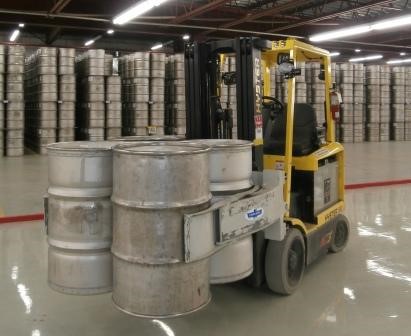Oilfield & Energies
Deuterium oxide in hydrology: Tracing its origin 27th August 2018
By Isowater Corporation
We speak to Isowater‘s Dr A James Farmilo about the use of ‘heavy water’ as a hydrological tracer, with a focus on hydrologi
We speak to Isowater‘s Dr A James Farmilo about the use of ‘heavy water’ as a hydrological tracer, with a focus on hydrological applications in hydraulic fracturing or ‘fracking’.
History of Hydrology
As one of the most essential commodities on earth, the presence of water has been of interest to people dating back to ancient times. Some of the earliest accounts of hydrological research are writings from Greek and Roman philosophers illustrating the origin of naturally occurring water sources as well as theories to understand its movement. 1
Thousands of years of scientific inquiry and research lead to the emergence of hydrology as a scientific discipline aimed at addressing the occurrence, movement and distribution of water in an area. Modern hydrology has since evolved to include studying how pollutants travel in the ground, changes in aquifers and monitoring ‘fracking’ processes.
Deuterium Oxide as a Tracer
Investigating the behaviour of groundwater has revealed hydrological tracers as the best methods for examination of the water.
“Tracers are compounds or molecules that are able to be detected at low levels and ideally act similarly to the molecules of what you wish to study” says Dr A James Farmillo, Vice President, General Manager and Chief Chemist at the Isowater Corporation. “They provide direct insight into the waters’ dynamics”.
The most common of these tracers include dyes, salts and isotopes.2 Dr Farmillo believes that, when choosing a tracer, those very similar in movement and composition of the water provide the most useful information. Based on this premise, both tritium and deuterium oxide – belonging to the isotope tracer group – become very attractive candidates for quality hydrological tracers.
Deuterium oxide is pure heavy water (2H20; D20) in which both hydrogen atoms are the deuterium isotope rather than the protium isotopes. Deuterium oxide is almost chemically and physically identical to ordinary ‘light’ water however, it is 10% denser. This increase in density gives the compound the name ‘heavy water’.
Deuterium oxide has become very useful in the hydrology sector. When injected into the water table, it provides insight directly into the distribution and presence of groundwater within an aquifer.3 Even small amount of deuterium oxide allows scientists and researchers to develop a better understanding of water flowing in specific locations. More recently hydrological applications of deuterium oxide have included hydraulic fracturing or ‘fracking’.
As a stable isotope and with no harmful chemical association, deuterium oxide has no negative environmental impact and does not pose any hazards. In addition, deuterium oxide does not have any reactions that will destroy the benefits of its’ marker. Other traditional hydrological isotopic tracers include tritium.
“Tritiated water is used in some cases however, because of the radioactivity, it is best to avoid when possible” says Dr Farmillo. “Tritium tracers therefore can be very harmful to the environment as well as the integrity of the substance in observation”.
Growth of Deuterium Oxide
“The use of deuterium oxide as a tracer in the oil and hydrology industry has been largely dependant upon the development of instruments that can read the low levels of isotopic variation in the water” explains Dr Farmillo. “There is naturally occurring deuterium found in all water so levels of deuterium that are higher than the background levels must be detected… this requires the use of powerful technology and precise equipment”.
This development can be attributed to progress made in measurement techniques such as mass spectrometers and digitalization of data processing.
Deuterium oxide as a tracer is not limited to hydrology, it is also used in hydraulic fracturing in the exploration process for natural gas by oilfield services and applications.
Dr Farmillo explains, “Sometimes deuterium oxide is injected into drilling mud and the penetration of the water or drilling fluids into core samples is observed.”
Heavy water is also known to have geological research applications.

Sourcing Heavy Water
As a regulated substance, deuterium oxide must be sourced from a reliable authority. Isowater is a licensed provider of deuterium oxide and ensures the integrity and quality of its product. Isowater’s in-house experts and global logistics team are dedicated to meeting the dynamic needs of their customers and ensure heavy water that can strengthen and advance any supply chain.
“There has been a recent shift in our customer’s end-use of the deuterium oxide, more frequently are we seeing customers inquiring about our deuterium oxide for hydrology and oilfield purposes, indicating a growth for this compound as a tracer in the industry,” expresses Dr Farmilo.
Isowater Corporation is hopeful more companies and researchers will understand the benefits deuterium oxide as a hydrological tracer brings to their work.
“The use of deuterium oxide as a tracer has greatly contributed to the field of hydrology and will continue to do so for decades to come,” he concludes.
References:
- Todd DK. Civil Engineering Dept at University of California, Berkeley, 1959.
- Stadnyk T et al. Canada: Isotopes in Environmental and Health Studies, 2005.
- Leibundgut C et al. German Research Center for Environmental Health Institute of Groundwater Ecology, 2009.
Interview with:
A. James Farmilo PhD, Vice President, General Manager, and Chief Chemist, Isowater Corporation, 40 Sandford Fleming Drive, Collingwood, Ontario L9Y 4V7, Canada
T: +1 705 293 1106


